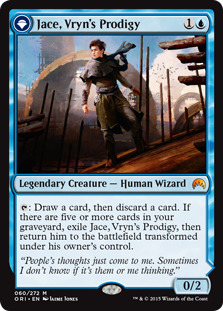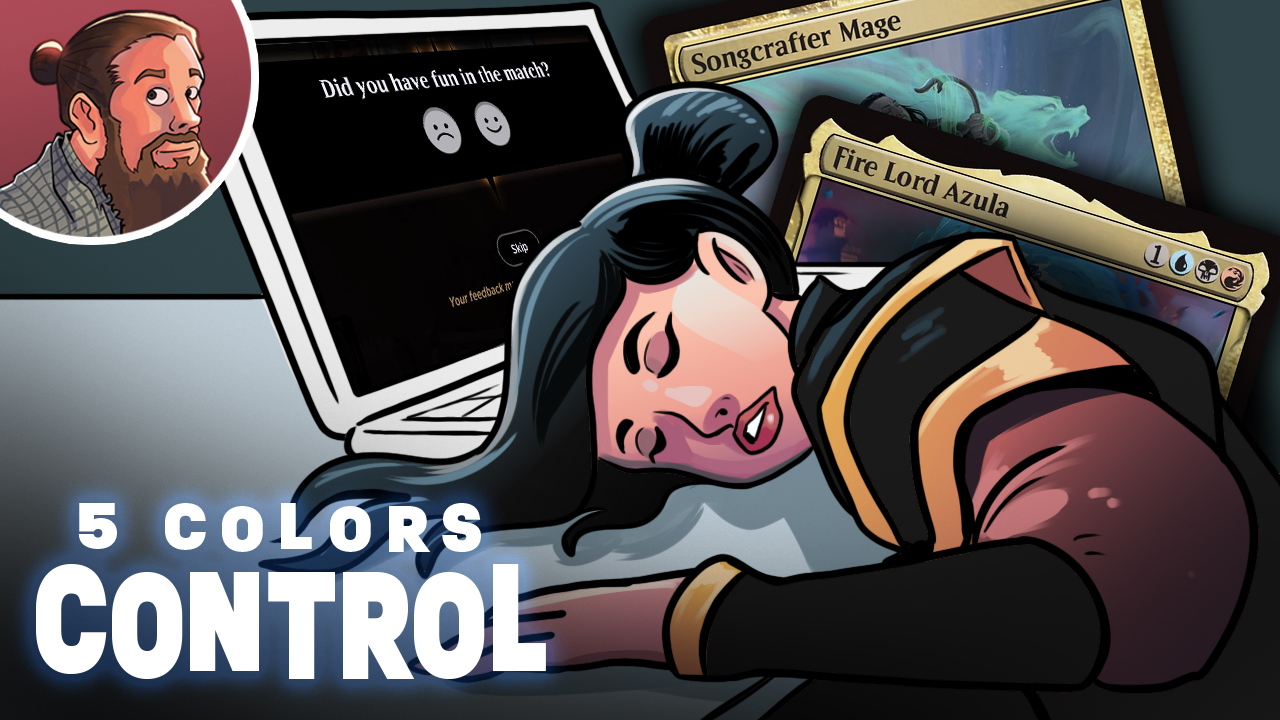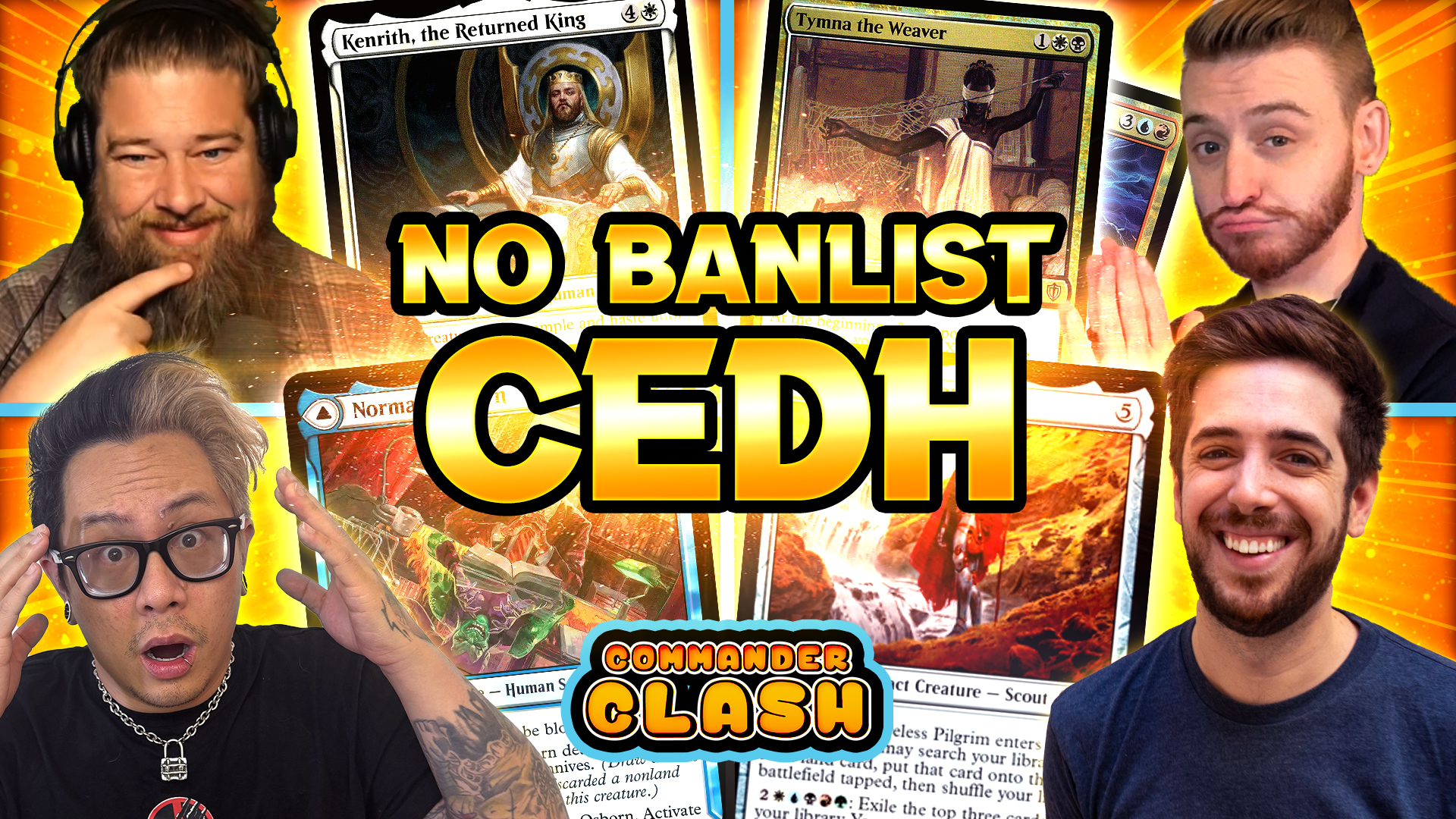This Week in Legacy: After the Bans - SCG Worcester
Welcome to another This Week in Legacy. In this week’s article, I’ll be looking at the first paper results from the post-ban format, which were the events on the SCG circuit. There was a Team Open in Worcester on 14-15th of July, with a corresponding Legacy Classic on the Sunday. As such, there’s quite a bit of data on the post-ban metagame to look through.
Furthermore, in today’s article I have an interview with Brian Wong, a Hong Kong-based player who Top 4'ed a recent Duels for Duals event in China, giving a perspective on the deck he played and the Chinese metagame and community.
SCG Worcester Team Open
As always, a Team Open leads to a somewhat skewed metagame, especially in a post-ban format where people aren't entirely sure what they’re going to be looking towards. Find the Top 8 here and a list of all the Day 2 decks here.
RUG Delver and Death & Taxes, certain enemies, are locked at the top of the metagame, and I expect these two decks to be the go-to “Blue tempo” and “non-Blue fair” strategies moving forward. Sneak & Show also made a great appearance and certainly gains a lot of traction when people are playing oddball, imperfectly tuned decks – I think Sneak & Show especially punishes the midrange builds of Grixis and BUG people are tinkering with. The deck can certainly struggle against Death & Taxes and RUG Delver, however. The rest of the field had stalwarts like Lands and Miracles still in tow, but decks that got boosts, such as Infect and Blade decks, are starting to rear their heads in the new format.
Let’s start with the first-placing TES deck of Bryant Cook.

Congratulations to Bryant, whose continued innovation in the TES archetype is well-appreciated, and his list certainly profiles where Stormtroopers should be looking in the new format. What I find most powerful about this list is its focus on Empty the Warrens. This has always been TES’s strength, but Bryant has ratcheted this up by including an additional Empty in the main deck, along with being able to go “Belche-mode” and bring in even more Empties from the sideboard. I think this plan is excellent against the current top two decks of the format – RUG Delver and Death & Taxes. Death & Taxes, to begin with, suffers against a Belcher-style opening, which “gets under” problematic hatebears like Thalia, Guardian of Thraben or Ethersworn Canonist. With main deck Remorseful Cleric now also an option, relying less on cards like Cabal Ritual is also more feasible. RUG too struggles against a quick Empty, with naturally Storming into Empty being an excellent plan to make RUG players second-guess when to deploy countermagic. RUG also has a tough time dealing with Goblins once they’re on board, with the majority of RUG lists playing only one sweeper in the sideboard.

Daniel Jessup and Nathan Robinson both brought very straightforward versions of RUG Delver to the Top 8, and the RUG flagship Tarmogoyf, Mongoose, Stifle and Wasteland is flying high. Noah Walker, however, stuck to his Grixis guns and played a revamped version of the top deck of the Deathrite Shaman format.


The big deal is Bomat Courier, who is looking to be a very feasible one-drop creature now that there is no one-mana 1/2 blocking the way. His ability to restock a Delver player after they’ve deployed the majority of their hand cannot be underrated, and whatever is under Courier can be easily discovered after one looks through their deck via fetchlands (this is especially pertinent on Magic Online). I do think Bomat encounters a few issues in the format due to it matching up quite poorly in combat with most threats and is not truly a “threat” on its own per se, unlike Angler and co. that can close out a game. But the verdict is definitely still out on this one, and I would not be surprised if this proves to be a staple one-drop of the format moving forward.


The list interestingly has replaced Probe with additional cantrips in Preordain as well, which I am less a fan of once more. There’s a lot more “air” in the deck with Preordain’s addition, and it can often lead to clunky opening hands flush with cantrips that take much to long to dig into action. Cantrips are great, but spinning your wheels spending mana cantripping around in a proactive Delver deck is not exactly where I want to be. Holdovers from previous Grixis Delver also include Cabal Therapy and Young Pyromancer. Pyromancer I can see being reasonable, especially with Bomat to gas back up, but Therapy I am very down on in this kind of shell as, unlike combo decks, Therapy is typically used to create card advantage rather than strip away key spells. Without the sure-fire hit of Probe-Therapy, that card advantage is not often going to be achieved.
I do think Grixis Delver has some great sideboard options worth exploring, however. Liliana, the Last Hope, Bitterblossom, Red blasts, Edicts and excellent artifact destruction made the color combination in a Delver shell definitely worth investigating. Which version of Grixis Delver rises to the top in the coming weeks should be interesting. Will it be Noah’s Bomat build? The Brainstorm Show’s recently published Grixis Faeries list? Death's Shadow? Personally, I feel that a Grixis Delver that can truly capitalize on the power of Gurmag Angler will be what finds its place at the top of the metagame moving forward.
Death & Taxes is looking to be one of the most popular decks moving forward, and the SCG Team Open brought lists that may be the “standard” moving forward. In particular, the inclusion of Brightling is now widespread. I think Rax Dillon’s list is a great starting point.




I love the main deck, the inclusion of Brightling and Remorseful Cleric makes the curve seem so much slimmer while still full of utility. I think the sideboard could use a few changes though, with cards like Cataclysm in particular set for a comeback without people unable to rebuild effectively with Deathrite Shaman on board.
Two other decks I’d like to profile are Grixis Control and BUG Control:


Both these lists are the leftovers of Czech Pile, I suppose, and I definitely think there is a lot of potential here, but also a lot of ironing out to do. The Grixis Control list in particular looks very clunky without the curve-slimming ability of Deathrite Shaman, and I’m not sure if cards like Hymn to Tourach is where the deck wants to be, at least in the main deck. I would love to more-so see a Grixis Control shell that focuses on using the most efficient one-mana answers possible, and then slamming an Angler to finish the opponent off – perhaps loading up on more one-mana discard and additional cantrips in Preordain. Baleful Strix and Kolaghan's Command are quite the combo though.

Meanwhile, the BUG Control list looks to use Noble Hierarch over Deathrite, giving this list a more naturally aggressive bent, especially with the inclusion of the Tarmogoyfs. Rather than utilize a Green Sun’s package for more turn one accelerants (and more Goyfs), this list has included Strix and Snapcaster, both fine additions, though somewhat removing the focus from the mana dork into True-Name tempo-esque plan. I definitely like the inclusion of From the Slaughter and Life from the Loam in the sideboard though.
Other lists in the Team Open I’d also like to give attention to are friend Ethan Gaieski’s run with RUG (with some very interesting main and sideboard choices) and Grixis Tezzerator finding its way to 26th place, with some spicy Ghirapur Aether Grid in the sideboard!
SCG Worcester Legacy Classic
The Classic had a Top 8 that can be found here.
What a Top 8. Winning it was Eldrazi Post!?

A version such as this is relatively uncommon, as most Eldrazi lists are either on one extreme or the other: the aggressive versions featuring no Post lands and including Eldrazi Mimic, or the ones more reliant on ramp artifacts like Thran Dynamo and co. This list is somewhat in the middle, including many aggressive early plays like Walking Ballista and Matter Reshaper, but also including Grim Monolith, Ulamog and Ugin for an unbeatable end game.
Eldrazi as an archetype I expect to gain a lot, with it crushing RUG Delver with ease and the deck happier to see Swords to Plowshares instead of Baleful Strix out of the midrange decks. It can still struggle with Death & Taxes and Sneak & Show, who are both proving to be very valid choices moving forward, but I think it’s definitely an archetype to be more aware of moving forward.

This Blue-White Blade list is very interesting in that it doesn’t utilize Back to Basics at all, and also looks towards Brightlight as a three drop of choice (over True-Name, of all cards!). Brightling is certainly quite the payoff for a stable mana base with an abundance of White sources. In the sideboard, Baneslayer Angel also brings the spice.

This is one to get excited about – Goblins taking fourth in the new metagame! Other than Kiki-Jiki, Mirror Breaker and Krenko, Mob Boss (that’s a bit too many “big” spells for me), I’m a big fan of everything going on in this list, and Goblin Trashmaster alongside Deathrite’s banning are proving to be significant leaps for the deck. It really can now live out its strength of crushing fair decks in the new metagame. Another interesting inclusion in the sideboard is Alpine Moon, which I imagine is for Lands and other Port/Wasteland matchups. It is helpful that, unlike Pithing Needle, it will not affect Goblins own Wastelandss and Ports.


Two versions of Grixis Death’s Shadow also made appearances. Joseph Tiblett’s list looks very close to my suggested list in my article two week’s ago (glad the list went well for you!). The innovative inclusions of Bitterblossom and Blood Crypt I can certainly get on board with.

David Nunez’s list, on the other hand, I am less on board with. Firstly, the Kess and Nicol Bolas are very wild additions that I definitely feel are unwarranted in this new metagame without Deathrite to accelerate them out. Secondly, the inclusion of Stifle and Thoughtseize in the same deck I really do have trouble getting on board with. The two cards lead to very different play patterns, with Thoughtseize trying to prevent the opponent from playing cards by selectively choosing the most threatening card in their hand and getting rid of it, while Stifle aims to do so by crippling their mana. Of course, sometimes these plans can gel together, but I think choosing one plan is important to creating a cohesive deck list. Without Probe, going for a more midrangey style ala Grixis Delver of old or Shadow decks from Modern seems more feasible, because Thoughtseize is an auto-include.

The card I do like in the sideboard is Hymn to Tourach though, which seems especially potent as a plan against combo and the grindy White midrange and control decks. Having the Blood Crypt in the mana base also makes this a really feasible inclusion.
Interview with Brian Wong, Top 4 of China’s Duels for Duals
Lastly, I’d like present an interview from Brian Wong. Brian recently participated in the Duel for Duals event in China, taking the Top 4 with RUG Delver. I thought I’d interview him, to give us a bit of perspective on the Chinese Legacy scene, along with how he feels concerning RUG Delver, one of the new format’s top-tier decks, moving forward.
And so, on with the interview!
Sean: Hey there! Please tell us your full name and any other personal details you'd like to mention (age, profession, etc.).
Brian: Hey Sean! Thanks for inviting me for the interview. My name is Brian Wong, and I am a Hong Kong-based Magic player. I used to be a Public Relations practitioner but as most Hong Kong people here do, I switched to banking later to better support my hobby. I am very lucky to have a bunch of friends playing with me – even my girlfriend Natalie joined our little team called Cake Rangers (because we all really like cakes!).
Sean: How did you initially get involved in Magic, and what place does it have in your life currently?
Brian: I first started playing Magic back in 2008, when the Shards of Alara came out. Back then I was studying in Australia at the time and was looking for a game to play at the local store. I soon found out that Magic is a game with a lot of depth, and being an enthusiast in Real-Time Strategy (RTS) computer games, I was drawn to it. But despite being very interested, I didn't really have enough time to keep playing and collecting. 2013 was the year when I finally decided to get back into Magic. My competitive nature took over in Theros block and tried to participate in various constructed events – from the infamous Eldrazi Winter in Modern, or casting Siege Rhino alongside Jace, Vryn's Prodigy in Standard, I manage to enjoy every single second of it.


Magic has now become one of the biggest hobbies in my life. The idea of two players playing against each other with decks of their own, playing out each step like chess moves and winning over by predicting and playing mind games is an extremely rewarding experience. It also allows me to have an excuse for traveling around the globe attending GPs and meeting new players from different continents. In 2017 I decided to take the Magic Judge examination and became a Level 1 judge. Until now, I am actively helping new or seasoned players to get into various formats of Magic in my local game stores.
Sean: What is the Chinese Magic scene like, and, more particularly, the Chinese Legacy scene? How do you fit into the Chinese Legacy community?
Brian: I find the Chinese Magic scene interesting, and actually quite similar to those in Japan. Compared to the smaller region in Hong Kong, where we have more than twelve game stores within just 1,000 square meters, Magic stores are much harder to find except in major cities. As such, most players are very competitive and willing to work the extra mile. I have only been to a couple of the local game stores in China and found players often playing competitive constructed formats against each other, instead of playing Commander or casually drafting.
As for Legacy, there's a group called Magic Tournament Association (MTA), which is compose of many dedicated players. MTA is currently the largest group in China to host annual events for players across the whole country. The most famous ones are named the Annual Legacy Invitational Tournament or the Duel for Duals event that allows everybody to join. As the events are on an invitation basis, the players’ qualities are pretty impressive. There are often more than 100 players joining the events, with Top 8s awarded dual lands as well as a qualifier to the next annual event.
It was actually my first time attending MTA’s event this year in 2018. I have definitely met with Chinese players during my GP grinding, but I have never really participated in an all-Chinese event. I feel like most of the Chinese players are friendly and amazing to play against.
Sean: What's your history with Legacy, and why have you been led to RUG Delver after the Deathrite and Probe banning?
Brian: My Legacy experience started as soon as 2013, as I was exploring the mystical format where a land cost you USD 300 each (now it gets even worse!). I remember the first deck I owned for the format is a Chalice of Life combo deck. I was on a budget and would like to see how crazy the format was. Of course, I got beaten senseless back then. Since then onwards, I have been fascinated by the enormous card pool and the versatility of various decks available. I have been through Pox, 4c Loam, Black-Red Reanimator and Blue-Red Delver, and finally settled on Grixis Delver, which fit my obsession for tempo and powerful synergy in a deck.

However, I was not ready when WoTC suddenly dropped the ban hammer on two of the most important cards in the deck, and that was two weeks before the tournament in China! I couldn't sleep that night on the announcement, and quickly looked through the internet to see what decks I could choose to practice with. Eventually, I decided to try Canadian Threshold, or RUG Delver, as my deck of choice for the MTA tournaments.
RUG Delver has been praised as one of the true tempo decks in Legacy since its creation, and that is what I like most. Now with Deathrite Shaman gone, the natural predator for the deck has disappeared, and the cute Nimble Mongoose can once again bite my opponent to death with ease.
I really enjoy the way RUG delver plays out – you play your threat, and then use all of your resources to defend the queen until you can ride it to victory. The number of counter spells allows me to always have an answer to different archetypes, and the mana denial plan, especially with Stifle, is so strong that it might win you the game on spot once you counter fetches twice against a multicolored deck.
Sean: Please give a brief run down of your recent tournament!
Brian: I was lucky enough to get into Top 4 for the Duel for Duals run by MTA on the 14th of July with 129 players attending. I started with a 5-0 record, then lost two rounds and won the last one. I faced a variety of decks, including Blue-White Stoneblade, Black-Red Reanimator, Eldrazi Stompy, Elves, Miracles, 4c Tezzerator and Food Chain Elves (!). While in the Top 8, I once again faced Black-Red Reanimator in the Top 8, and then lost the mirror in the Top 4.
I was not as lucky in the main Annual Invitational Tournament on the 15th July, where I ended up with a 4-3 record. I played against Black-Red Reanimator, Pox, Blue-White Stoneblade, Sneak & Show, Infect, Miracles and Dragon Stompy.
Sean: How did the deck feel? Any particular stand-out cards from your list? Any changes you'd make?
First of all, a shout out to all the members in the Discord channel for RUG Delver, especially Dan Wren and James Hsu, as they helped me assemble and decide the final version of my list.

The deck feels amazing, and every matchup feels winnable. The final version I have decided on didn't vary a lot from the stock version, but here are some changes that I made:
i) Tarmogoyf vs. Hooting Mandrills


It's a well-discussed topic, but I value the heavy beater that is castable on turn two instead of Mandrills, which is harder to cast if not purposely set up. Mandrills can be better as it can often be cast off one mana, holding up mana for counter spells. During my testing though, I find that might not be as efficient as jamming a 3/4 on the battlefield on turn two with Daze or Force of Will as backups. With Black decks on the decline and RUG Delver coming back as one of the strongest tier decks, Goyf's advantage outweighs its vices.
ii) Three Stifles main deck

As mentioned in Jadine Klomparens’s article recently on SCG, I agree that playing all four Stifles in a meta expecting it might not be a good idea. Watching your Miracle opponent holding up their turn one Ponder just to dodge your Stifle is definitely fun, but you will soon get stuck if you draw more than one copy in the late game. To substitute this, I played a Tarfire in place of the fourth Stifle to help grow Tarmogoyf and act as additional removal against smaller creatures.
iii) 2/2 spilt on Spell Snare and Spell Pierce


Spell Snare was the stand-out card for both day’s events. Spell Snare can be narrow, yes, but it is also the only hard counter spell you have except Force of Will. Of course however, Spell Pierce is also very important for early game permission.
iv) Sulfur Elemental

Sulfur Elemental was another stand-out card during my tournament. While studying the upcoming meta, me and my team predicted that there would be a lot of Death & Taxes and Miracles. Sulfur Elemental seems to be the best solution for both of these matchups. The +1/-1 for White creatures is why it works well against Death & Taxes of course, but being able to flash in a 3/2 body works amazingly against Miracles or other control decks too. I even closed out a game against Dragon Stompy just by flashing in the creature and dealing the last few points of damage!
v) 2 True-Name Nemesis in sideboard

I had been struggling on whether or not to main deck True-Name Nemesis. However, tapping out on turn three to cast True-Name seems too slow. In some matchups like the mirror or Eldrazi, you often aggressively Wasteland and Daze back your own lands, which makes three mana even harder to achieve. The power level of True-Name is too strong to not include two in the seventy-five though.
In terms of changes I would definitely try to incorporate two Winter Orbs to solidify the mana denial. I would probably also try Sulfuric Vortex in place of Sylvan Library in the sideboard. Sometimes clocking your opponent is better than additional card draw.


Brian: Thanks a lot again for the interview Sean!
Conclusion
That’s all for me, as always check out these links for additional Legacy content from around the web:
- Megucci is going Legacy crazy, playing Burn, Goblins and Zombardment for CFB. Bob Huang also has a Bant Blade video there.
- Eric Virgo and Cyrus Corman-Gill bring Top Down Legacy, find their first episode here.
- PlesantKenobi plays some Brightling here.
- Humans of Magic interviews TES’s AJ Kerrigan here.
- Ben Friedman talks on the recent Legacy decks to watch out for. Find that at StarCityGames.
- Phil Gallagher gets the two Death & Taxes Top 8ers at Worcester to tell their stories. Find Rax Dillon’s here and Theodore Jung’s here.
- At the TES site, Bryant talks his new list and the recent matchup battle is against RUG.
Make sure to be checking out the recent Legacy Premier League as well, you can find all the details, stream replays etc. at itsJulian.com. Lastly, this great graphic depicting what the metagame is looking like currently!
‘Til next time!
Sean Brown
Email: sean_brown156@hotmail.com
Reddit: ChemicalBurns156
Twitter: @Sean_Brown156
What I’m Playing This Week

I think this will be my way forward with Shadow; the sideboard lets the deck turn into a really Jund Em’ Out machine post-board, especially with the altered mana base to support Hymn to Tourach, which should help a lot against the White decks. Swords to Plowshares is less of an issue if the opponent is Hellbent anyway.
The Spicer Corner

I don’t even know what to call this… Scissors Stompy?! This is an awesome way to take Chalice, Force, Daze, Thoughtcast and the new Tezzeret, Artifice Master. I think Ensoul Artifact is a very powerful card and mono-Blue has gotten a lot of great tools recently in this artifact-based shell. I’m looking forward to seeing this list further tuned.













